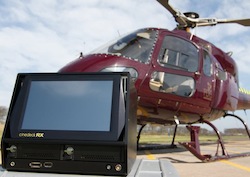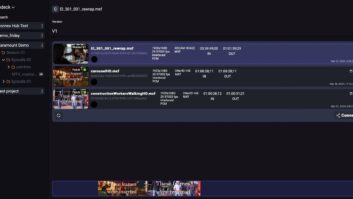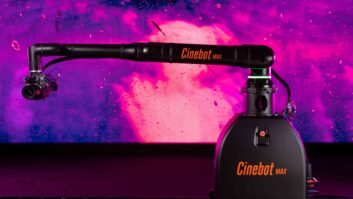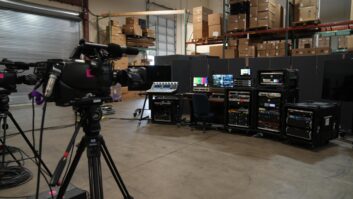
On-shore helicopter operator PDG Helicopters is using a Cinedeck RX dual channel, solid-state recorder to deliver high quality digital aerial filming. Based in Scotland, PDG Helicopters acquired its Cinedeck RX from Cindeck’s UK distributor Oxygen DCT. The unit is now being used to record uncompressed 4:4:4 from a gyro-stabilised Cineflex V14 HD camera, in a wide range of frame rates, recording variations of Apple ProRes, Avid DNxHD and Cineform codecs, according to each customer’s preference. Peter Jones, aerial cameraman and PDG Helicopters’ camera systems manager, said that Cinedeck RX has allowed PDG Helicopters to mirror the industry trend towards tapeless capture, and to extract the full performance of its Cineflex camera system. “As it records to a range of codecs, clients can leave the shoot with edit-ready footage, which ultimately helps their production costs – and that’s a great selling point for us,” he said. “Aerial cinematography has a number of issues, not the least of which is vibration,” Jones explained. “With a tape deck, you’re always concerned there might be dropped frames or other image degradation. With other capture devices you just have to trust the takes are there when you land. There’s huge merit in the RX being a solid-state recorder, with built-in redundancy, that lets you review material in the air. It gives you great confidence while you’re shooting. I was absolutely delighted to discover that it was developed by a fellow cinematographer [Cinedeck CEO Charles Dautremont] with expertise in aerial shooting, who had encountered exactly the same issues as me.” Jones added that a key advantage of Cinedeck RX is the choice of production formats it offers. “The Cinedeck RX has tremendous appeal for producers because it can record uncompressed 4:4:4 and the native codec for editorial. Programme makers can leave the shoot with edit-ready material, normally Avid DNxHD or Apple ProRes, and there are no extra costs for ingest and transcoding. This helps to reduce their post production costs, and ultimately has a positive impact on the overall budget.”
On an operational level, Jones said the dual channel Cinedeck RX is much smaller and lighter than a tape deck, and offers greater performance and functionality over flash cards. “With Cinedeck RX, you just glance at the screen and immediately know you’re recording,” he said. “Whilst we’re in the air, I can check the levels on the waveform, and easily scrub through the clips to double-check that I have shot what the director required. If required, we can look at ways we can improve a shot by changing the flight profile of the helicopter, or the camera move.” Recording duration and security are other crucial considerations for aerial filming, and PDG has equipped its Cinedeck RX with four caddies that hold eight solid-state drives, providing a total 2TB recording capacity. “Some jobs might take a couple of hours, and we can normally fit the footage onto one SSD drive,” said Jones. “But on larger jobs, we might be away for several days. Having such a large recording capacity, being able to change drives in flight and to keep rolling is a real bonus. The fact that material is protected with the redundant record provides piece-of-mind too.”
www.cinedeck.com







